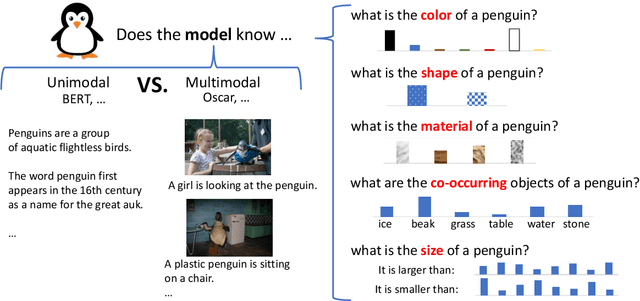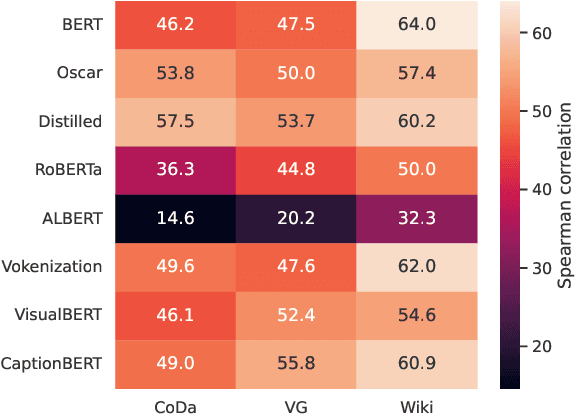Visual Commonsense in Pretrained Unimodal and Multimodal Models
Paper and Code
May 04, 2022



Our commonsense knowledge about objects includes their typical visual attributes; we know that bananas are typically yellow or green, and not purple. Text and image corpora, being subject to reporting bias, represent this world-knowledge to varying degrees of faithfulness. In this paper, we investigate to what degree unimodal (language-only) and multimodal (image and language) models capture a broad range of visually salient attributes. To that end, we create the Visual Commonsense Tests (ViComTe) dataset covering 5 property types (color, shape, material, size, and visual co-occurrence) for over 5000 subjects. We validate this dataset by showing that our grounded color data correlates much better than ungrounded text-only data with crowdsourced color judgments provided by Paik et al. (2021). We then use our dataset to evaluate pretrained unimodal models and multimodal models. Our results indicate that multimodal models better reconstruct attribute distributions, but are still subject to reporting bias. Moreover, increasing model size does not enhance performance, suggesting that the key to visual commonsense lies in the data.
 Add to Chrome
Add to Chrome Add to Firefox
Add to Firefox Add to Edge
Add to Edge